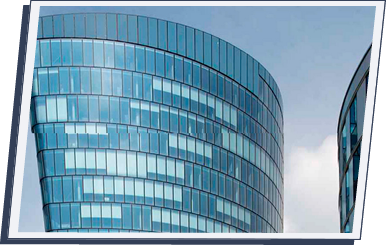 Tempering process embraces heating and cooling phases on a horizontal line to make outer surfaces of the glass gain compression stress while it gains indirect tensile stress in the center. A full-tempered glass is approximately 5-fold stronger than an untreated glass. It is useful as safety glass because it shatters into dice-size pieces, when broken, to reduce injury risk. Tempering process embraces heating and cooling phases on a horizontal line to make outer surfaces of the glass gain compression stress while it gains indirect tensile stress in the center. A full-tempered glass is approximately 5-fold stronger than an untreated glass. It is useful as safety glass because it shatters into dice-size pieces, when broken, to reduce injury risk.
It is also possible to apply semi-tempering process to a glass by using different cooling phases. A semi-tempered glass is approximately 2-fold stronger than an untreated glass and does not fall into safety glass class.
Cutting, drilling and surface and edge preparations on a glass are impossible after tempering (except sanding).
Distortions are inevitable and unavoidable results of a thermal treatment provided that “tempering traces” are recognizable only from certain perspectives and kept within “curvature” and “introversion” tolerances. If traces are kept at minimum by applying a precious thermal regime during tempering, such traces are not considered as a defect alone. It is recommended that traces are parallel to the ground.
Microscopic nickel sulfite inclusions in a fully tempered glass may cause spontaneous breakdown. To reduce this risk, fully tempered glass may be tested through heat soak for elimination. This test cannot remove spontaneous breakage risk but only reduces it.
|